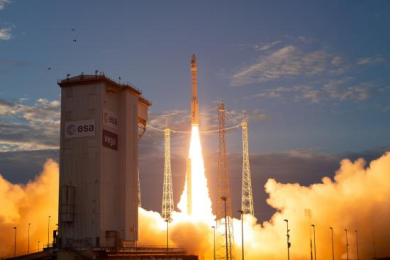The European Space Agency (ESA) launched the much-awaited Aeolus satellite into orbit on 22 August. It will provide data expected to improve weather forecasting and contribute to better disaster management.
Aeolus - the “Keeper of Winds” in Greek mythology - aims to track and profile global wind better. Aeolus uses the Active Doppler Wind Lidar (DLR) method, which has the potential to provide global wind data - including about remote areas without ground-based weather stations. The Atmospheric Laser Doppler Instrument (ALADIN) uses a completely new method of observing the wind: it records the wind’s profile through pulses of ultraviolet light generated using by laser technology and beamed into the atmosphere.
Aeolus create a consistent series of about 120 constant wind profiles per hour to provide better and almost real-time information for meteorological predictions.
Upon launching the Aeolus satellite, the first set of action was to switch on the instruments and make sure the laser is functional. Its first image shows backscattered light from air cloud and the ground surface.
The data produced by Aeolus as seen above shows the measurement of a full navigation around the Earth. While the light yellow colour indicates cloud-free areas, the darker yellow and red particles show the dust particles, clouds, and Earth surface. The darker blue, in particular, shows the travel path of the ultraviolet light.
Aeolus carries a laser, telescope and receiver which emits 50 pulses per second of ultraviolet light from its pulses into the atmosphere. First, the laser emits a pulse of ultraviolet rays down into the atmosphere. The telescope, in turn, collects the backscattered light from air particles, dust and air molecules it comes in contact with. Then, the receiver analyzes the change in frequency or wavelength from the backscattered signal to determine the speed and direction of the wind.
The data, once calibrated, can be used by both for meteorological prediction, climate research and accurate weather forecast.
Data from Aeolus will advance scientific understanding of atmospheric phenomena and global environmental challenges such as global warming, air pollution and natural disasters. Consequently, Aeolus data will provide the information needed by scientists to better understand the relationship between wind, pressure, temperature and humidity thus better preparedness for possible hazards.
The lack of direct global wind measurement is one of the major setbacks in the current global observing system. The dynamics of the atmosphere as well as the changes in the climate, and insights into the wind’s influence on heat and moisture within the Earth's surface are amongst the most pressing Earth observation quest its dataset sets to solve.

